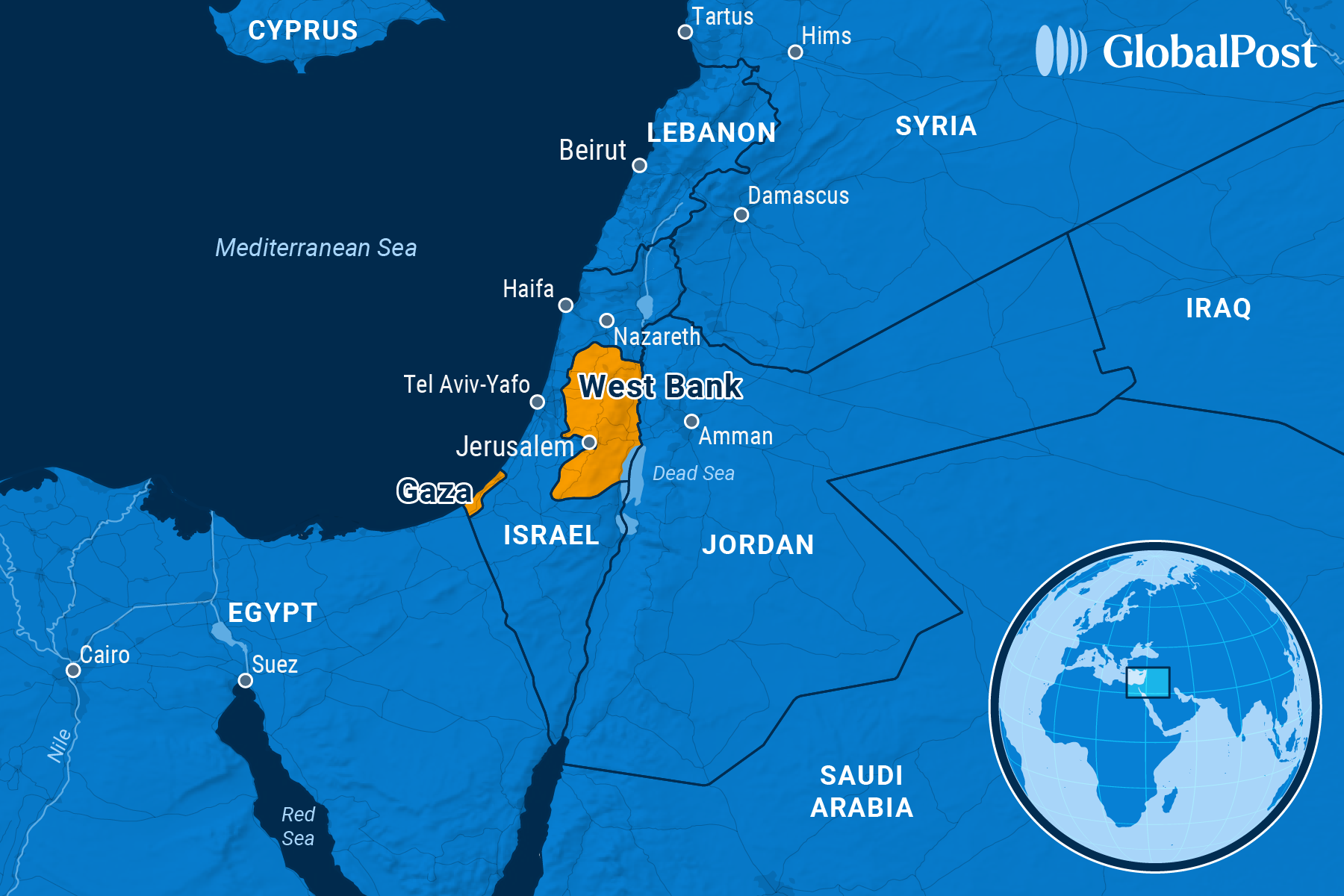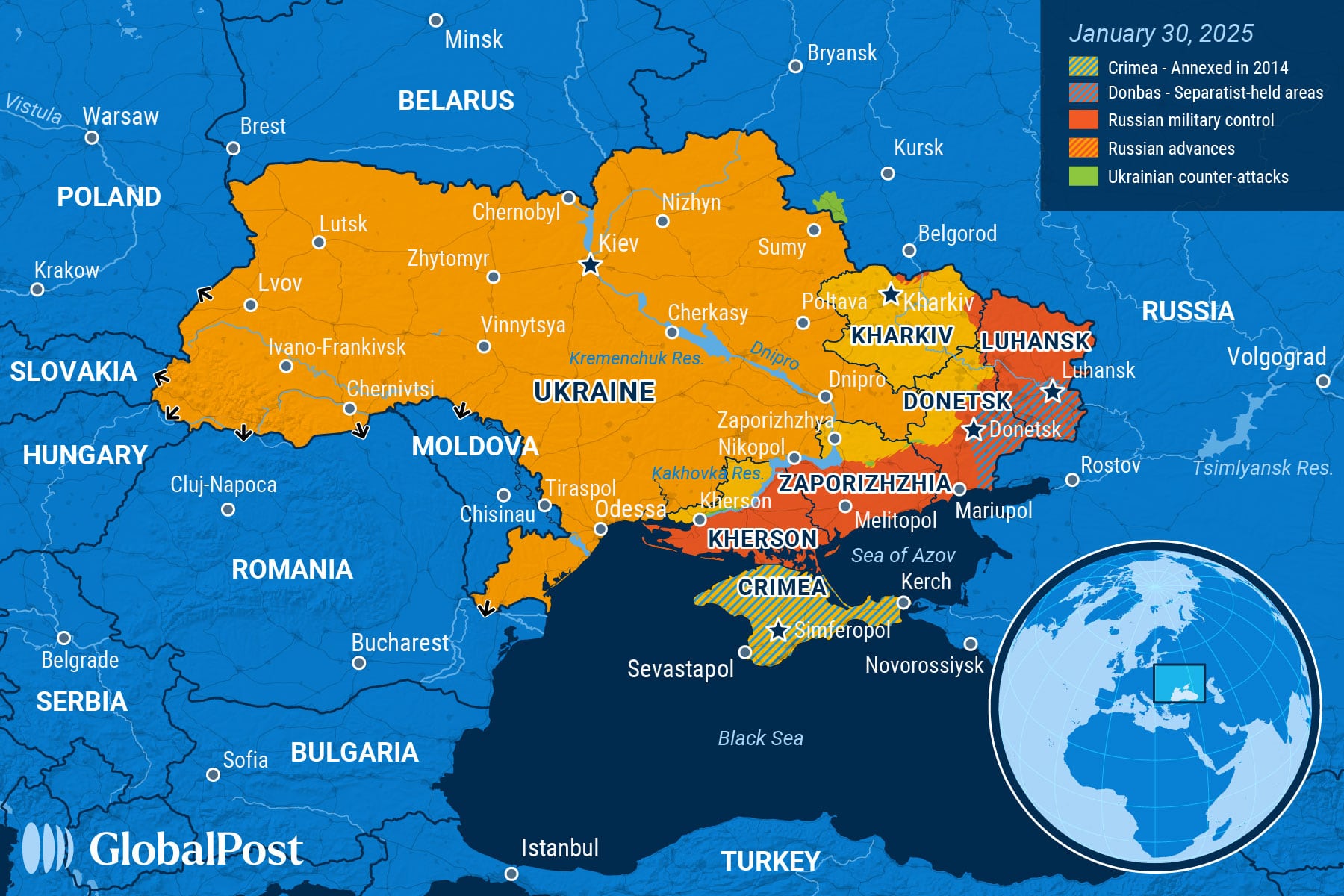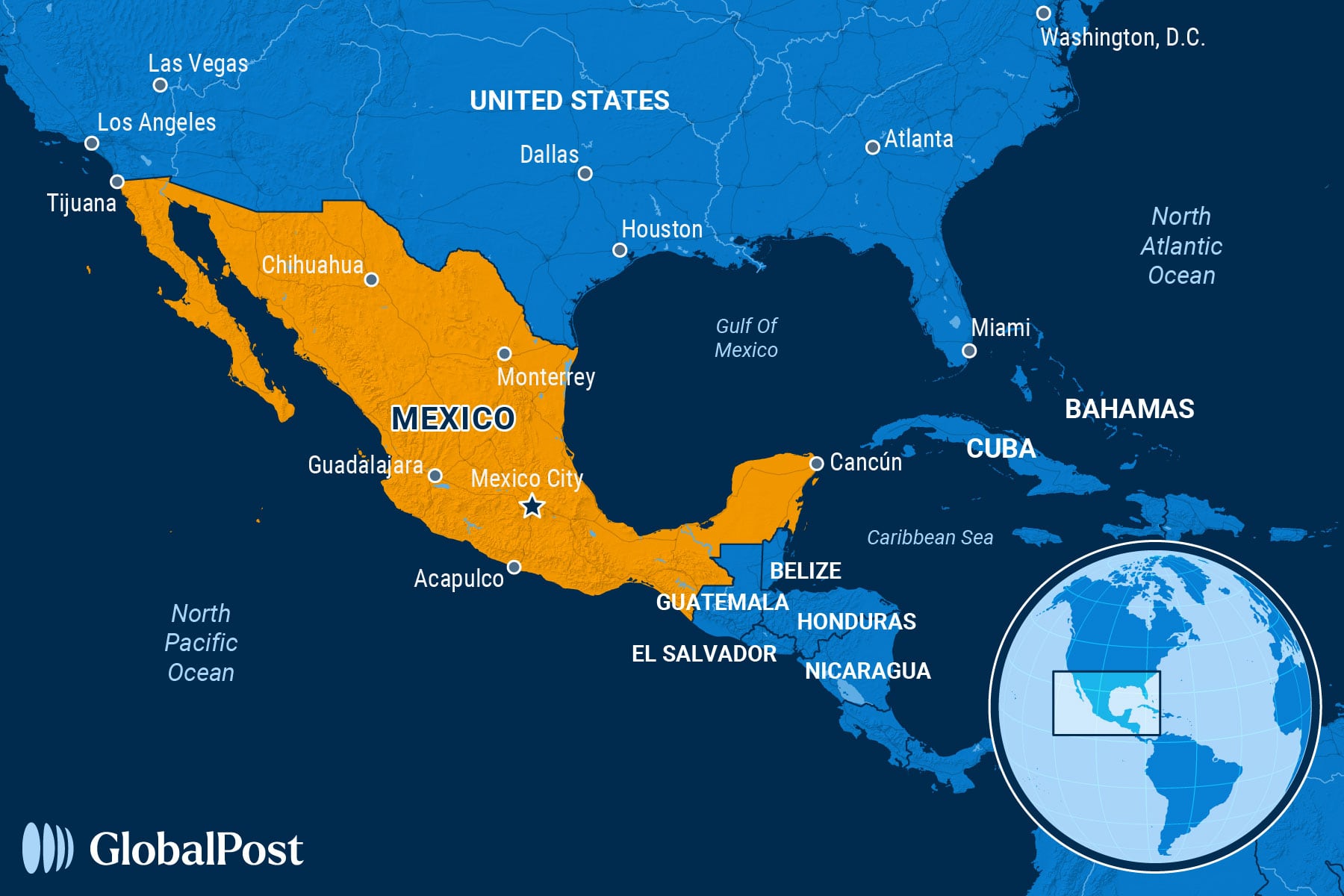The Threat From Within: Some Gazans Say They Have Had Enough
NEED TO KNOW
The Threat From Within: Some Gazans Say They Have Had Enough
GAZA

Late last month, mourners at a funeral in the Beit Lahiya district of Gaza left the ceremony and began to march through the streets, yelling slogans and carrying signs that read, “Down with Hamas.”
It was a rare – and startling – sight.
Over the next few weeks, thousands of Gazans joined the demonstrations in multiple areas of the enclave, saying they were fed up with their “terrorist” overlords, furious at Israel and the West, exhausted by the war that began more than 18 months ago, and tired of mourning their loved ones.
“Our children have been killed, our houses have been destroyed,” Abed Radwan, who joined the protest in Beit Lahiya told the Associated Press. “(I joined to protest) against the war, against Hamas, and the (Palestinian political) factions, against Israel and against the world’s silence.”
Protesters called for the freeing of the Israeli hostages and an end to the war. They want Hamas to step down, saying that if it doesn’t, there won’t be the peace they need so desperately to survive.
Hamas has governed Gaza since it won elections in a landslide victory in 2006, the last vote held in the enclave. It seized power from the Western-backed Palestinian Authority, run by Fatah, which controls the West Bank.
Since then, the group has ruled with an iron fist, cracking down on previous protests and also torturing, imprisoning, and even killing dissenters and those it sees as traitors to its cause.
As a result, even though polls have long shown that a majority of Palestinians do not support Hamas, most are too afraid to speak out against the group.
Last year, a poll by the Palestinian Center for Policy and Survey Research showed that about 60 percent of Palestinians in Gaza and the West Bank do not support Hamas in spite of an uptick in its support after the Hamas attack on Israel on Oct. 7 that killed 1,200 people and led to more than 250 being taken hostage. That attack sparked the war.
Over the past weeks, Hamas mostly stayed away from most of the protests, witnesses told local media. Still, Gazans said they were ordered by Hamas to remain inside after the initial protests or face getting shot in their legs. Some protesters were detained, and others had limbs broken.
Meanwhile, an umbrella group of Gaza-based organizations that includes Hamas, called the “Factions of Resistance,” released a statement warning protesters they would be punished. “These suspicious individuals are just as responsible as the occupation for the bloodshed of our people and will be treated accordingly,” the statement read.
Some protesters have been killed.
Just after the anti-Hamas protests, 22-year old Uday Rabie was taken by armed fighters with Hamas’ military wing, the Al-Qassam Brigades, in the Tal al-Hawa neighborhood of Gaza City. He was severely tortured and died of his injuries. He had criticized the group publicly and taken part in the protests.
“They took him, they kept torturing him,” his brother, Hassan Rabie, told CNN. “They then called me and said, ‘Come get your brother.’”
“He was still alive (when) they handed him over to me,” he added. “They told me, ‘This is the fate of everyone who disrespects Al-Qassam Brigades and speaks ill of them.’”
That’s to be expected, say analysts. “Hamas continues to use brutal tactics to suppress dissent within the Palestinian population, just as it has in previous protests,” wrote Joe Truzman of the Long War Journal. “The group employs the same repressive methods against civilians who dare to challenge its rule.”
Still, reprisals against Hamas are getting bolder. In early April, members of Gaza’s influential Abu Samra family tracked down and shot to death a Hamas police officer in the central Gaza town of Deir al-Balah who they said had killed their son, Abdul Rahman, the Wall Street Journal reported.
Soon after, another influential Gaza family publicly declared that a Hamas member had killed their son and demanded justice, giving Hamas three days to hand over the killer or they would take action, the newspaper added.
Some say the protests erupted now in spite of the fear of incurring Hamas’ wrath because Israel has degraded Hamas’ security forces, even if it didn’t eliminate Hamas entirely – it’s still very much in control of Gaza in spite of losing most of its top leadership and thousands of fighters in the war.
Another reason is desperation.
“This time is different, I believe,” Said Lulu, a 38-year-old from Gaza City, told the New York Times, referring to past protests. “We have absolutely nothing to lose. We have lost everything already, so we are not afraid.”
Protesters such as Lulu say they will fight Hamas if the group tries to put down the protests. Even so, analysts believe dissenters have no chance of overthrowing Hamas. Others point to the size of the protests as smaller than those in the past.
Still, the protests have made an impact outside of Gaza, observers say.
In early March, Egypt and other Middle Eastern countries proposed a peace plan that calls for Gaza to be ruled by Gazans, not Hamas – Hamas has said it would step down. The protests show opponents of the plan, such as Israel, that there are Gazans who are anti-Hamas that could fill positions in a future civil service there, analysts said.
Currently, the second phase of the ceasefire is being negotiated – the first phase expired in early March and the war resumed: Israel has launched strikes that have killed hundreds of people in the enclave over the past few weeks and halted deliveries of food, fuel, medicine, and humanitarian aid to Gaza.
Israel has vowed to escalate the war until Hamas returns the 59 hostages it still holds – 24 of them believed to be alive. Israel is also demanding that the group give up power, disarm, and send its leaders into exile.
Hamas has said it will only release the remaining captives in exchange for Palestinian prisoners, a lasting ceasefire, and an Israeli withdrawal from Gaza.
The war has killed more than 50,000 Palestinians, according to Gaza’s Health Ministry. Israel’s bombardment and ground operations have caused vast destruction – the majority of buildings are destroyed in the enclave, healthcare, water, and sanitation systems have collapsed, and there are shortages of food, fuel, medicine, and shelter. Meanwhile, the war has displaced 90 percent of Gaza’s 2.1 million people.
The suffering is immense, say humanitarian officials. As a result, protesters explain they have to stand up now against Hamas as they have no choice anymore because “Everyone failed us.”
One example of that sentiment is Mohammed Al-Najjar, from Gaza, who posted on his Facebook that enough was enough: “Excuse me, but what exactly is Hamas betting on? They’re betting on our blood, blood that the whole world sees as just numbers … Even Hamas counts us as numbers. Step down and let us tend to our wounds.”
Others are looking to the future, saying it’s time for a change.
“I chanted and screamed and vented my inner rage,” Raed Tabash, 50, from Khan Younis, told +972 magazine, after attending protests. “We’ve been living under siege for 20 years. There’s no work and no future for our youth. Are we giving birth to our children only for missiles to kill them in the most horrific way?”
“We want a complete and final end to the war, and for elections to be held so we can choose a party other than Hamas to govern us,” he added. “I will not stop going out and demanding an end to our suffering until all of this stops and there is a change in the government in Gaza.”

THE WORLD, BRIEFLY
Questioning Peace: Russian Missile Strike In Ukraine Sparks Doubts About Ceasefire
UKRAINE

Russian missile strikes on the northeastern Ukrainian city of Sumy killed at least 34 people and wounded 117 in an attack that prompted questions over the seriousness of peace negotiations, the Associated Press reported.
On Sunday, two ballistic missiles hit Sumy’s city center as residents gathered to celebrate Palm Sunday. The strike damaged more than 20 buildings, including a university, shops, and apartment buildings. Ukraine’s emergency services confirmed that two children were among the dead and 15 among the injured.
The second missile exploded mid-air, spreading cluster munitions over a wide area in a deliberate attempt to inflict mass civilian casualties, officials said.
Ukrainian President Volodymyr Zelenskyy condemned the attack as an act of terrorism and called for stronger international action. He warned that Russia’s use of such tactics proves it is not serious about ongoing US-backed peace talks.
However, the Kremlin denied targeting civilians, claiming the missiles were aimed at Ukrainian military officers. Russian officials also accused Kyiv of using civilians as human shields while adding that Moscow only strikes “military and near-military targets,” CNN noted.
Even so, US Secretary of State Marco Rubio and European leaders condemned the attack. French President Emmanuel Macron accused Russia of prolonging the war and called for “strong measures” to impose a ceasefire. The Trump administration’s envoy to Ukraine, Keith Kellogg, said the attack “crossed any line of decency.”
The strike came just two days after the US Middle East envoy Steve Witkoff met with Russian President Vladimir Putin to discuss an end to the three-year conflict in Ukraine.
Despite that meeting, Ukrainian and Russian officials accused each other of violating a tentative US-brokered pause in strikes on energy infrastructure agreed only last month.
Ukrainian diplomats said Russia had launched nearly 70 missiles and thousands of bombs since the agreement. In return, Russian Foreign Minister Sergey Lavrov accused Kyiv of “attacking us from the very beginning, every passing day, maybe with two or three exceptions.”
While Ukraine has accepted a broader US-backed ceasefire proposal, Russia has blocked progress with strict preconditions, including demands for an end to Western military aid to Ukraine.
Meanwhile, Ukrainian officials have expressed concern over a potential new Russian spring offensive, warning that Moscow is using increased violence to pressure Ukraine into concessions.
They added that Russia is preparing more attacks on the Sumy region, where it has pushed across the border from Russia’s Kursk region.

Indonesia Arrests Judges for Bribery in Corruption Case
INDONESIA

Indonesia arrested three judges who allegedly received more than $1 million for acquitting three palm oil companies of corruption charges while they sought export permits in 2022, Reuters reported Monday.
Authorities over the weekend had already arrested Muhammad Arif Nuryanta, chief judge of South Jakarta district court, for allegedly receiving $3.57 million from the companies in exchange for a favorable verdict, according to Reuters.
The chief judge then gave $1.07 million to the three other judges who delivered the verdict – and who were then apprehended.
One local court’s chief judge had previously been arrested on bribery charges in the same case, along with two lawyers and a court clerk.
The companies involved are Wilmar Group, Musim Mas Group, and North Sumatra-based Permata Hijau Group.
Indonesia contributes to about 60 percent of the global palm oil supply. The country imposed rigid export regulations in 2022, such as a three-week ban on shipments, in an effort to control the rising prices of cooking oil locally.

Mexican Fans Enraged By Ban On Cartel-Glorifying Songs
MEXICO

Enraged fans forced a popular Mexican singer to flee during a concert Saturday after he told them he would reluctantly comply with a government ban on songs that venerate drug cartels, Billboard reported.
Performing in Texcoco, 15 miles outside Mexico City, Luis R. Conriquez told the audience that he was prohibited from singing his songs celebrating the leaders of the Sinaloa cartel and said that, while the law must be respected, he felt bad he couldn’t sing what the crowd wanted to hear.
The crowd responded angrily, booing the band, throwing objects and drinks at them, and jumping on the stage to destroy instruments and equipment.
The incident follows the increased enforcement of rules that target a controversial sub-genre of music known as “narcocorridos,” which glorifies the activities of Mexican drug cartels and has become popular on digital platforms.
Narcocorridos are banned in multiple Mexican states, such as Nayarit, Baja California, Chihuahua, and Quintana Roo. The State of Mexico’s Security Department over the weekend urged local authorities to enforce the ban on narcorridos at public events.
The US State Department revoked the work and tourism visas of the members of the Los Alegres del Barranco band in March after they displayed the picture of a prominent cartel boss, Nemesio Rubén Oseguera Cervantes, known as “El Mencho,” during a performance in the western state of Jalisco.
Oseguera is the leader of the Jalisco New Generation Cartel and is wanted in both Mexico and the US. The Jalisco cartel is considered a foreign terrorist organization by the Trump administration.
Afterward, prosecutors from the state of Jalisco launched an investigation, questioning band members about whether they were promoting violence, a crime punishable by up to six months in prison.
On April 11, Jalisco’s state government proposed a new law to allow municipalities to regulate or ban narcocorridos altogether at public or private events.
Recently, Mexican President Claudia Sheinbaum launched a music contest “for peace and against addictions” to provide an alternative to the popular narcocorridos in Mexico and the US, CBS News explained.
Meanwhile, Conriquez said on social media that he regrets what happened and will make significant changes to his lyrics.

DISCOVERIES
Ore and Lore
Last fall, a Swedish man spotted a circular object in a marsh on the Swedish island of Öland. He thought it was a tool.
It turns out, however, that it was a Viking Age iron arm bracelet, likely more than 1,000 years old.
The C-shaped object is ornately decorated with rows of raised dots and animal heads on its ends, Smithsonian Magazine reported.
It’s thanks to these markings and figures that the artifact was dated to the Swedish Viking Age, between 800 and 1050 CE, by archeologists who compared it with artifacts at the Swedish History Museum in Stockholm, according to the Viking Herald.
For Vikings – Scandinavian warriors who violently colonized coastal Europe between the ninth and 11th centuries – it was common to wear jewelry, like necklaces, brooches, and arm bracelets, known as armlets.
Chieftains and other Vikings of rank used to gift armlets to their supporters to secure loyalty and demonstrate wealth. Still, this find stands out.
“What is unusual is that this one is made of iron,” archeologist Karl-Oskar Erlandsson told Swedish radio station P4 Kalmar. Most surviving Viking armlets are made of silver or bronze, and out of the more than 1,000 stored in the Swedish History Museum’s collection, only three are made of iron.
Iron jewelry wasn’t uncommon among Vikings, but finding such an artifact is: The metal is highly susceptible to corrosion and degrades when exposed to water and oxygen.
This specific armlet was likely preserved by the marsh – the soil and sediment of wetlands are oxygen-free.
Moreover, according to Swedish law, people are obliged to report artifacts made of silver and gold but not those made of iron, which is likely one more reason why iron Viking jewelry is hard to come by.
The marsh where the armlet was found wasn’t part of a grave, as Vikings did not usually bury people in wetlands, nor was it a Viking settlement.
“It could be a sacrificial bog, where they made sacrifices to the gods or higher powers,” Erlandsson added. “So then there may be more objects to find in this wetland.”
Archeologists are planning to search the marsh this spring.
